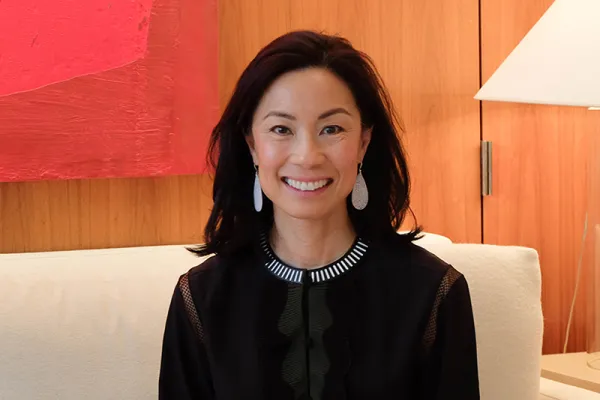Charlotte Feng Ford ’83 Endows New Position for Curator for Contemporary Art at SCMA
Supporting Smith

Published June 13, 2016
As a child growing up in a small town northwest of Chicago, Charlotte Feng Ford ’83 loved to collect things: baseball cards, dolls, the usual markers of youth.
Then, when she was 12 years old, her father took the entire family on a six-week, 10-city trip to Europe. “We saw the Prado, the Sistine Chapel and the Louvre,” Ford recalls.
That trip instilled in Ford a love of art that only grew during her years at Smith. An economics major, she says her favorite class was Art 100. “We studied some of the works that I’d seen on our family trip,” she says, “and I loved being surrounded by other women who were talking about the same things I cared about.”
Ford’s passion for art, and her belief in the importance of a community where art can be discussed and enjoyed, shaped her life in significant ways. After graduating from Smith, she began collecting art for personal pleasure. When she realized that art was giving her a broader perspective on life, her collection became more than a hobby, growing into an ambitious lifetime venture with a focus to foster the careers of young artists and the institutions that support them.
Now, Ford is helping to vault her alma mater into a preeminent position in the contemporary art world by endowing a curator’s position at the Smith College Museum of Art (SCMA). The new position, which carries Ford’s name, will allow the college to hire a curator focusing on the burgeoning field of contemporary art, making Smith one of the only college museums in the nation to have a position dedicated to contemporary work.
Jessica Nicoll, director and chief curator of the SCMA, notes that the Charlotte Feng Ford ’83 Curator of Contemporary Art will allow the SCMA—which was founded some 140 years ago as a collection of recent art—to offer a new and nearly unparalleled academic focus on contemporary art.
“This has become a specialized academic and curatorial field, addressing a rapidly changing, global and technologically mediated environment,” Nicoll says. “The Charlotte Feng Ford ’83 Curator of Contemporary Art will allow Smith to take a leading role in contemporary art by collaborating with faculty and students on exhibitions and new research and coordinating an active program of artists’ visits.”
Ford hopes the new curator’s position will make it easier for Smith students and others who visit the museum to “be with the art of their times.” That access, she notes, is “a way to enhance the Smith curriculum, and it’s a way to help people see the world in different ways.”
“I didn’t grow up surrounded by the art of my time,” Ford adds, “but my children did, and that broadened their perspectives. Contemporary artists are responding to current issues, and people who see that work can’t help but be shaped by it.”
Ford’s own collection emphasizes emerging talent and a commitment to individual artists such as Karen Kilimnik, Andrea Bowers, Ryan Trecartin, Gabriel Orozco, Wade Guyton, Laura Owens and Gedi Sibony. The collection also includes significant historical works by Yayoi Kusama, David Hammons, Mira Schendel and Alice Neel. Guided by passion and subject matter that is important to her, Ford has collected and supported the works of Martha Rosler, Carol Bové, Isa Gensken and Anne Collier.
Ford says her collection is “built from the heart. I look for work that sparks an emotional connection.”
She also understands the responsibility that comes with her passion. “I want to ensure that the collection has depth, and that it includes the work of influential, established artists,” she says. “It is important to have a true relevance between the present and the past so that we can have a more stimulating future.”
Contemporary art, Ford notes, “can create possibilities. It seems today, young people are pushed to specialize their academic interests and extracurricular pursuits too early.”
“I hope that this gift will give people an opportunity to really be with the art of their times,” she says. “That kind of engagement can help people gain a better understanding of themselves—and perhaps veer off in a different direction, even if only briefly.”